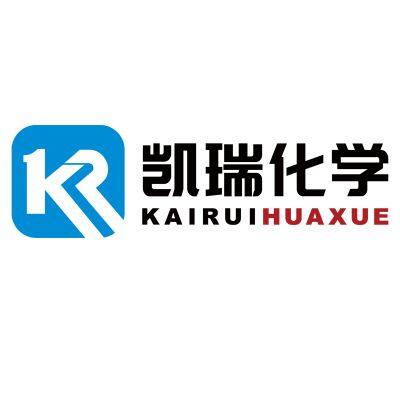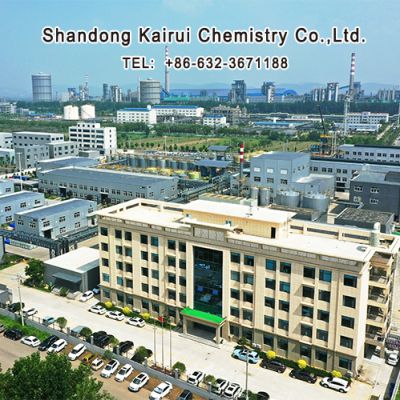Home > Products > Phosphonates Antiscalants, Corrosion Inhibitors and Chelating Agents > How to protect Antiscalant ATMP
How to protect Antiscalant ATMP
- QINGDAO,SHANGHAI
- T/T L/C D/P D/A Credit Card PayPal Cash Escrow Other
- 15 days
You May Like
-
Scale master reverse osmosis antiscalant/Antiscalant
-
What is the application of HEDP in cleaning agents?
-
What safety measures should be taken during the transportation of ATMP?
-
What are the solubility and stability of HEDP?
-
How does HEDP work in water treatment?
-
The mechanism of action of ATMP as a corrosion inhibitor and scale inhibitor
Product Details
| Brand Name | Shandong Kairui Chemistry Co.,Ltd. | Place of Origin | China | |
| Model Number | Phosphonates Antiscalants, Corrosion Inhibitors and Chelating Agents | Type | Carbon Black | |
| Purity | https://www.krwater.com/01-ATMP.htm | EINECS No. | 229-146-5 | |
| MF | https://www.kairuiwater.com/atmp.htm | CAS No. | 229-146-5 | |
| Usage | Paper Chemicals, Petroleum Additives, Surfactants, Textile Auxiliary Agents, Water Treatment Chemicals |
Product Description
To ensure the optimal performance and longevity of ATMP (Amino Trimethylene Phosphonic Acid), proper storage, handling, and protection are essential. As a highly active antiscalant and corrosion inhibitor, ATMP is sensitive to certain conditions that could degrade its effectiveness. Below are the key strategies for protecting and handling ATMP:
1. Proper Storage Conditions
Temperature: ATMP should be stored at ambient temperatures (typically between 5°C and 30°C or 41°F to 86°F). Avoid exposing ATMP to extreme temperatures, particularly high temperatures, as they can degrade the chemical structure and reduce its efficacy.
Avoid freezing: Freezing can cause changes in the chemical composition or structure of ATMP, rendering it less effective.
Containers: Store ATMP in air-tight, non-reactive containers, such as plastic or polyethylene drums. Metal containers should be avoided, as they could react with the phosphonic acid groups and affect the stability of ATMP.
Humidity: Keep ATMP in a dry environment. Exposure to moisture can affect its stability and may cause it to degrade over time, especially if it is in powdered form.
Light: Store ATMP in a dark place or in containers that protect it from direct sunlight. UV light may cause degradation of the chemical, particularly in sensitive formulations.
2. Handling Precautions
Avoid Contamination: When handling ATMP, ensure that there is no contact with oxidizing agents (like chlorine or hydrogen peroxide), which could break down the phosphonate structure. Use clean equipment, and avoid introducing impurities during transfer or mixing.
Personal Protective Equipment (PPE): While handling ATMP, especially in concentrated forms, wear appropriate PPE, including gloves, safety goggles, and protective clothing. ATMP can be irritating to the skin and eyes, and in case of exposure, proper first aid procedures should be followed.
Ventilation: Use ATMP in a well-ventilated area, especially if handling large quantities or in aerosolized form, to avoid inhaling any fumes or vapors, which could be harmful.
3. Storage and Shelf Life
Shelf Life: ATMP has a stable shelf life if stored properly, typically around 12 to 24 months from the date of manufacture. Over time, ATMP may degrade, so it is important to follow manufacturer guidelines regarding the shelf life and use-by dates.
Regular Inspection: Periodically inspect stored ATMP for any signs of degradation, such as changes in color, odor, or consistency. Any material showing signs of degradation should be discarded according to local hazardous material disposal regulations.
4. Protection Against Chemical Degradation
pH Considerations: ATMP is stable within a wide pH range (approximately 2-10), but extremely high or low pH can lead to hydrolysis or degradation of the phosphonic acid groups. In situations where the pH is outside this range, ATMP should be used with caution or in a diluted form to avoid decomposition.
Avoid Contact with Strong Acids and Bases: Strong acids (like sulfuric acid) or strong bases (like sodium hydroxide) can degrade the chemical structure of ATMP. Store and use ATMP away from these substances to maintain its stability.
Chelating Agents and Competing Chemicals: Since ATMP is a chelating agent, care should be taken when using it in conjunction with other chemicals that could also act as chelators or have similar functions. For example, if other phosphonates or EDTA are present, they might interfere with the performance of ATMP.
5. Formulation and Dilution Considerations
Concentration: If diluting ATMP for use in industrial systems (such as water treatment or cleaning), ensure that the dilution is done with clean, deionized water to avoid introducing minerals or contaminants that could interfere with the performance of ATMP.
Compatibility: ATMP is often used in formulations with other chemicals, such as dispersants, pH adjusters, and corrosion inhibitors. Ensure that these chemicals are compatible with ATMP to prevent any potential reactions that could reduce the efficacy of the formulation.
Test Compatibility: Before large-scale use, perform a compatibility test between ATMP and other components to ensure no chemical degradation occurs during mixing or use.
6. Avoiding Hydrolysis
Avoid Hydrolysis: ATMP is generally stable in aqueous solutions, but prolonged exposure to water or high humidity can sometimes lead to hydrolysis, breaking down the phosphonate groups. In water treatment systems, ensure that ATMP is used according to manufacturer guidelines to prevent any potential hydrolysis during storage or use.
7. Transportation
Safe Shipping: When transporting ATMP, ensure that it is shipped in appropriate containers that provide protection from moisture, sunlight, and extreme temperatures. For large shipments, ensure the proper labels and hazardous material classifications are adhered to according to local regulations.
Summary of Key Protection Measures for ATMP:
Store in cool, dry conditions with a temperature range of 5°C to 30°C.
Use airtight containers made from non-reactive materials (e.g., plastic).
Avoid exposure to moisture, extreme heat, and direct sunlight.
Handle with care, using appropriate PPE (gloves, goggles, etc.).
Protect from oxidizing agents, strong acids, and bases.
Ensure compatible chemicals when mixed with other water treatment or industrial products.
Inspect regularly for any signs of degradation (color change, unusual odor).
Follow manufacturer guidelines for storage, shelf life, and use conditions.
By adhering to these protection guidelines, the efficacy and safety of ATMP can be maximized in its intended industrial applications, including water treatment, oilfield operations, and cooling systems, ensuring long-term performance and safety.
Contact Us

- Shandong Kairui Chemistry Co., Ltd.
Product Categories
New Products
-
The mechanism of action of HEDP as a corrosion and scale inhibitor
-
Application of HEDP in daily chemicals
-
Application of ATMP in daily chemicals/ATMP Manufacturers
-
What is the specific application of HEDP in metal corrosion protection?
-
HMDTMPA/Water Treatment Chemicals/Corrosion Inhibitors/HMDTMPA Manufacturers
-
How to package copper corrosion inhibitor TTA.Na
-
In what fields can ATBS.Na be applied?
-
In what fields can PBTC.Na4 be applied?
-
OA-12/Lauryl Dimethyl Amine Oxide/Ammonyxao/Cationic surfactant
-
In what areas can PESA be used?
-
OTAC/Surface Treatment Chemicals
-
Chemical PCA/Dispersants PCA/PCA
Popular Searches
- water treatment
- polyacrylamide
- Chelating Agent
- pac
- Anionic Polyacrylamide
- water treatment chemical
- tcca
- trichloroisocyanuric acid
- potassium salt
- Sodium Salt
- Wastewater Treatment Chemical
- Phosphonic Acid
- hedp
- sodium polyacrylate
- corrosion inhibitor
- scale inhibitor
- antiscale
- amino trimethylene phosphonic acid
- Phosphonic Acid Atmp
- circulating cool water system
- food additive
- water treatment
- concrete admixture
- Concrete Additive
- rust inhibitor
- sodium gluconate
- superplasticizer
- water reducing agent
- hedp
- construction chemicals
Recommended Products
- High-quality Dimethyl Silicone Oil PDMS 500cst
- PU Water Based Mold Release Agent
- Food & Medical Grade Liquid Silicone Rubber Mold Translucent
- Transparent Liquid Silicone Rubber For Foot Care Products
- PDMS 350cst High-quality Dimethyl Silicone Oil
- CAS 497-19-8 Sodium Carbonate Na2CO3 China Factory Manufacturer Industrial Grade Soda Ash
- Key Additive to Enhance Detergent Quality — Fast-Dispersing, High-Clarity HPMC Solution
- Antiseptic and disinfectant, tanning agent CAS: 111-30-8 Glutaraldehyde
- Water Repellent Hydrogen Silicone Oil for Building Material
- Hydrogen Silicone Oil PHMS - High SiH Content (1.6%) for Crosslinking
- Methyl Hydrogen Silicone Oil Used for Water Resistance
- Silicone Emulsion 60 with High Gloss for Tyre Polishing
Find Similar Products By Category
- Chemicals > Chemical Auxiliary & Catalyst > Chemical Auxiliary
Product Tags:
- Please Enter your Email Address
- Please enter the content for your inquiry.
We will find the most reliable suppliers for you according to your description.
Send Now-
 sales
Hi there! Welcome to my shop. Let me know if you have any questions.
sales
Hi there! Welcome to my shop. Let me know if you have any questions.
Your message has exceeded the limit.

- Contact supplier for lowest price
- Customized Request
- Request Sample
- Request Free Catalogs
Your message has exceeded the limit.
-
Purchase Quantity
-
*Sourcing Details
Your inquiry content must be between 10 to 5000 characters.
-
*Email
Please enter Your valid email address.
-
Mobile



